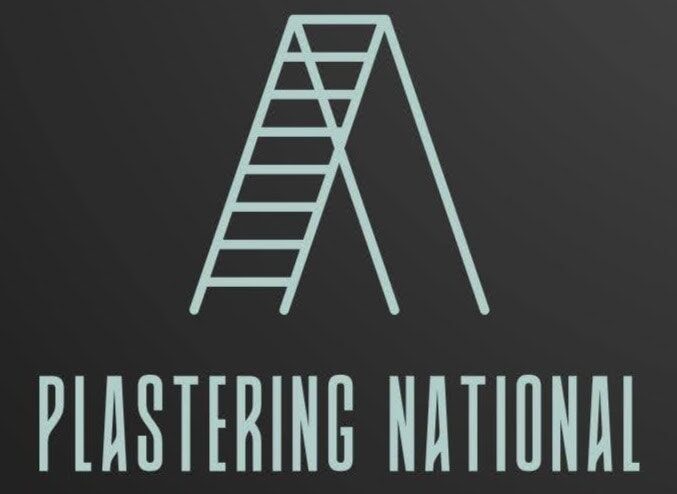Plastering requires skill and precision, but having the right tools can make all the difference. Modern equipment can help you achieve a smooth and polished finish, whether you are a professional plasterer or a DIY enthusiast.
This guide outlines the essential tools for plastering, from the basics to more advanced equipment, ensuring your work is efficient and professional.
Let’s get straight to the point.
Plastering requires the right tools for efficient, high-quality work. Key tools include trowels, hawks, sponges, and corner trowels for applying and smoothing plaster.
Advanced tools, such as squeegee trowels, scarifiers, and ornamental form tools, help with larger or more detailed jobs. Safety equipment, such as eye protection and gloves, is essential.
Beginners should start with basic kits, while professionals can invest in more specialised tools. Regular maintenance and cleaning of equipment will improve longevity and performance.
Different Tools In Plastering

1. Basic Tools Every Plasterer Needs
To start plastering, you need fundamental tools in your kit. These are essential for any experience level and will help you achieve consistent results.
Trowels
The trowel is the primary tool for applying and smoothing plaster. There are several types of trowels, each suited for specific tasks:
- Finishing trowel: This tool smooths the final layer of plaster. Its wide, flat blade helps create a flawless surface.
- Corner trowel: Designed to finish both internal and external corners with precision.
- Bucket trowel: Essential for scooping plaster from a bucket onto a hawk or directly onto the wall.
Hawk
A hawk is a square tray used to hold wet plaster. Its comfortable handle allows the plasterer to apply plaster to the wall quickly using a trowel.
Drop Cloths
Plastering can get messy, but drop cloths help keep the workspace clean. These protect floors and furniture from plaster splashes, saving cleanup time and creating a good impression on clients.
2. Advanced Tools For Professional Plastering
You’ll need more advanced tools for complex plastering jobs or professional use.
Squeegee Trowels
A squeegee trowel is great for smoothing large areas of plaster. It is especially useful for finishing larger surfaces quickly, such as walls and ceilings.
Scarifier
The scarifier is a metal comb-like tool that creates grooves in the plaster base, ensuring better adhesion for subsequent layers. It is particularly useful for rendering external walls.
Mortar Stand
A mortar stand is a foldable, portable workbench for holding plaster or mortar. It improves efficiency by keeping materials within easy reach and reducing the need to bend over repeatedly.
3. Tools For Decorative And Detailed Work
Plastering involves creating smooth surfaces and decorative elements. You’ll need specialised tools for detailed mouldings, arches, or other ornaments.
Ornamental Form Tool
The ornamental form tool is essential for decorative moulding, columns, or other intricate details. This tool helps create precise designs while maintaining durability.
Snips
Snips are used to cut metal beading, which is necessary when installing corner beading or other structural elements before plastering. Good snips will easily cut through cold or stainless steel beading.
4. Tools For Finishing Touches
Once the plaster is applied, achieving a smooth, polished finish requires the right finishing tools.
Sponge Float
A sponge float is used after the plaster has been partially set to smooth out minor imperfections and remove trowel marks. The sponge helps create an even surface and is especially useful for large areas.
Paintbrush
A high-quality paintbrush with thick bristles can blend plaster into hard-to-reach areas or smooth out fine details. It can also help remove excess water or smooth areas that require a more delicate touch.
5. Safety Equipment
Plastering, like any construction work, can present certain safety hazards. Protecting yourself is essential; these tools will help keep you safe on the job.
Eye Protection
Dust and debris are common when plastering, and eye protection is critical to prevent injury. Use comfortable, durable safety glasses to shield your eyes from plaster dust and small particles.
Leather Gloves
Leather gloves protect hands from sticky plaster and prevent skin irritation. They also offer a better grip on tools and make clean-up easier.
6. Practical Additions To Your Plastering Kit

The following tools might only be essential for some jobs, but they are useful to have on hand for more complex tasks or when working in confined spaces.
Handsaw
A handsaw is necessary to cut drywall sheets to fit awkward spaces or make repairs before plastering.
Step Stool
When working on high walls or ceilings, it would help if you had a step stool or a small ladder. Choose one with a platform at the top, where you can rest tools and materials.
Utility Knife
A utility knife is a versatile tool for cutting plasterboard, scoring walls, or opening materials. To extend its lifespan, look for one with replaceable blades.
7. Tools For Maintenance And Clean-Up
Keeping your plastering tools in good condition will extend their life and improve the quality of your work.
Cleaning Products
After each job, clean your tools with warm water, mild detergent, and a soft brush. This simple habit will prevent plaster build-up and ensure your tools last longer.
Bucket Lid Opener
A bucket lid opener makes it easier to access pre-mixed plaster without damaging the lid or the tools you use to pry it open. It’s an inexpensive but handy addition to any plasterer’s kit.
8. Plastering Equipment For Beginners
If you’re starting, investing in a basic plastering kit that covers most general tasks is important. Over time, you can expand your collection by taking on more complex projects.
Beginner’s Plastering Kit
For beginners, a basic kit should include the following:
- A finishing trowel
- A hawk
- A bucket trowel
- A corner trowel
- A sponge float
- Leather gloves
- Eye protection
Starting with these essential tools will help you complete most plastering tasks efficiently. As you gain more experience, you can gradually add more specialised equipment.
Conclusion
Plastering is a demanding but rewarding trade. The right tools are essential for reducing labour time, improving the quality of your work, and maintaining a professional finish.
Whether you are an experienced plasterer or a beginner, having the right equipment will set you up for success. If you’re new to plastering, start with the basics and build your collection of tools over time.
For professionals, investing in high-quality tools will ensure that your work remains consistent and efficient, job after job. Clean and maintain your tools regularly to keep them in top condition and extend their lifespan.
Frequently Asked Questions
What Are The Essential Tools For Plastering?
Essential tools include a trowel, hawk, plastering float, bucket, and mixing paddle. These tools help apply, smooth, and shape plaster, ensuring even coverage and a polished finish.
How Do You Use A Plastering Trowel?
A plastering trowel is used to apply and smooth plaster. Hold it at a slight angle and work the plaster in layers, pressing it into the wall surface for even distribution.
What Is A Plastering Hawk Used For?
A plastering hawk holds the plaster as you work. It allows easy plaster transfer to the trowel, enabling smooth and consistent application on the wall or ceiling.
What Is A Plastering Float Used For?
A plastering float is used to smooth and finish plaster after it’s applied. It helps level out imperfections and gives the plaster a clean, polished surface.
Why Do You Need A Plastering Sponge?
A plastering sponge is used to smooth and clean the plaster’s surface. It helps to remove excess plaster, refine texture, and ensure an even finish without damaging the wall.

